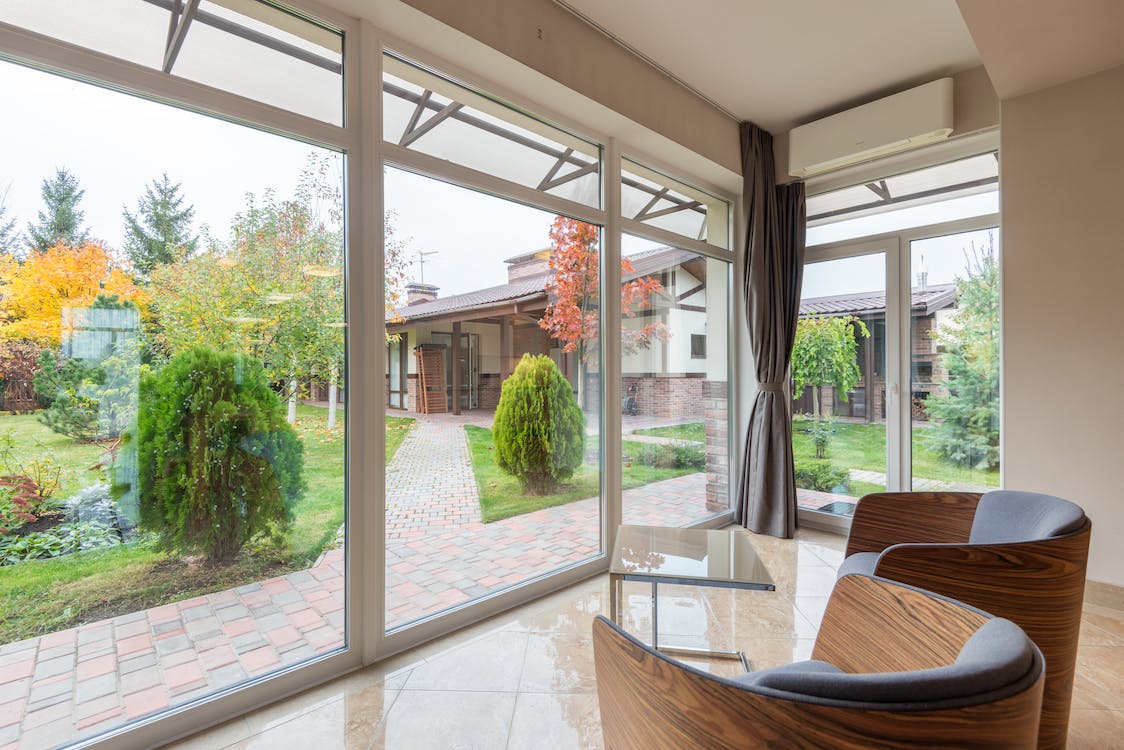10 Tips for Creating an Eco-Friendly Home
Simple changes for modern, environmentally friendly living.

Landlords want to create a rental property that tenants will love, which means understanding what today's renters want. Many people believe it is important to go green in all aspects of their lives. An eco-friendly home that encourages their sustainable lifestyle is all the more enticing to the renters of today.
If you want to attract more tenants and transform your property, check out these 10 tips for creating an environmentally conscious rental. With a few changes, you can create a place for future tenants to thrive in eco-friendly ways and love where they live.
1. Modern environmentally safe landscaping
Some landlords will need to start from the beginning and plan out their landscaping. If you have the flexibility to rearrange your property's layout, make every decision with the planet in mind. You can opt for native plants that are better for bees, pollinators, and other wildlife in your area. A quick internet search can provide an extensive list of native flora for your state, and identify plants that may help with endangered species.
Seek to work with landscaping companies that use eco-friendly pesticides. These substances are better alternatives to yard treatments made with damaging chemicals that end up in nearby waterways, or are deadly to important pollinators. These easy, small choices will have lasting impacts on the environment.
Also consider abandoning the traditional full grass, manicured lawn in favor of a more diverse, beautiful yard. For instance, different types of trees, native shrubs, or flowers placed in winding patterns, with a path of rocks lit by solar lamps.
2. Choose eco-friendly appliances.
Some of the more affordable properties come with standard, older, less efficient appliances, while the pricier rental homes generally already have modern upgraded appliances. Try to pick more energy efficient refrigerators, washers, and stoves for your eco-friendly home. Modern washing machines generally come with the option for an eco-friendly setting.
Look for the Energy Star stickers and products that consume less energy. Your future residents will appreciate using less power and generating a lower utility bill, while still using necessary appliances every day.
3. Buy programmable thermostats.
Traditional thermostats may not accurately record interior temperatures, causing the fan to run more than necessary. It's especially common for this to happen if the thermostat has been in use for years. Buy programmable versions instead, which have digital screens allowing residents to program different temperatures during different times of the day. For pet-friendly properties, a programmable thermostat will ensure their furry friends stay comfortable during the day without the constant running of the thermostat.
4. Install modern shower heads.
Modern shower heads are "low-flow," which means they use less water per minute than earlier versions. Residents can conserve their water usage without cutting down their showering or laundry routines, which makes a difference for the planet.
5. Choose LED bulbs.
If you choose to install light-emitting diode (LED) bulbs in units before tenants move in, your renters will save up to 17 watts of energy every time they turn on the lights. It's up to residents to choose their light bulbs after these burn out, but encourage them to stick with these more energy-friendly bulbs instead. LED light bulbs are one of the easiest ways to save energy in an eco-friendly home.
6. Choose reclaimed wood over brand new.
Before you install new floors or cabinets, consider using reclaimed wood materials when upgrading your property. Reclaimed wood helps to reduce the devastating global impact of rapid deforestation, helps to keep valuable resources from rotting in a landfill, and creatively repurposes wood that has been deemed unworthy.
7. Weatherproof windows and doors.
Between window panes and walls, and doors and door frames, are tiny gaps through which the outside air and elements can creep in. When this happens, HVAC units run longer and more often to compensate. Add new, or replace old weatherproofing around every door and window in your unit to ensure that your residents can continue to save energy and money.
8. Replace air filters regularly
HVAC units may also run longer if they struggle to circulate through clogged, soiled filters. Replace the air filters at least every two to three months for an eco-friendly home, and to ensure smooth airflow throughout the year.
9. Research your paint.
You can start revamping your home by simply buying new paint, but not every paint is good for the environment. Opt for non-toxic paint to use on all interior spaces. Your tenants won't be able to tell the difference visually, but you can mention it in your property's descriptions so future eco-friendly residents know you care about the little details.
10. Use sprinkler timers.
Some rental properties use sprinklers to maintain the lawns. If you decide to have a sprinkler system, make sure yours has a timer. Monitoring how long your sprinklers run will save you money and prevent from over-watering the property after a rainy day.
Learn about every green decision
There are always new, innovative ways for landlords to create eco-friendly rentals for the environmentally conscious renter. In these days of climate crisis, it's prudent to invest Earth-friendly notions like reclaimed wood, energy-saving appliances and non-toxic paint to start transforming your property into one that benefits our environment.
Created on: 04/04/24
Author: CreditLink Secure Blog Team
Tags: led lights, native plants , renovation , remodel , go green , green , eco-friendly,